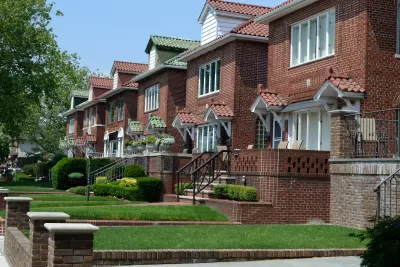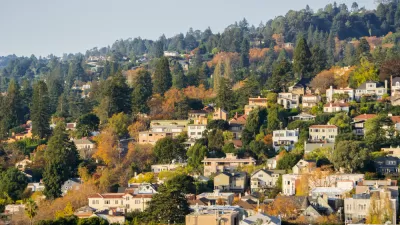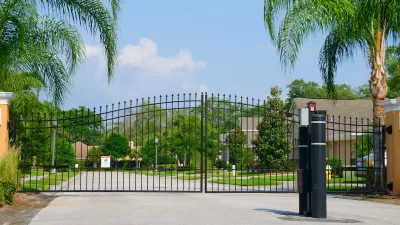The Trump administration’s talk about protecting the suburbs is based on misrepresentations of who really lives in suburbs and what these communities need.

"Given the scale of American suburbia, talking about 'the suburbs' writ large invariably papers over the differences that exist across this spectrum of communities, which range in population (from fewer than 100 residents to hundreds of thousands), location (from streetcar suburbs to exurbs), and built environment (from strip malls and subdivisions to dense, walkable downtowns)," writes Elizabeth Kneebone.
In addition, suburbs are diverse in terms of income, race, and ethnicity, but this does not mean all suburbs are equal. Exclusionary zoning and land use regulations have resulted in significant inequities. “These practices have allowed certain jurisdictions and neighborhoods to hoard wealth and opportunity, fueling racial and economic segregation and creating disparities not only between suburbs and cities but also within suburbia as well,” Kneebone.
In addition, the kind of suburbs touted by President Trump and Ben Carson—filled with single-family homes and with high average household incomes and low poverty rates—make up just one-fifth of suburban neighborhoods.
"Trump and Carson denigrate 'urban cities' by writing that they often struggle to 'provide for their citizens’ basic needs in housing, public safety and education'—but that is also the reality for many small, resource-strapped suburbs scattered across the fragmented patchwork of suburban America," says Kneebone.
They should instead, she argues, focus on policies and programs that will help people living in suburbs. Rent relief, tenant protections, and federal aid to states and cities are what is needed to bolster the suburbs that Trump and Carson allegedly want to save.
FULL STORY: Trump is clinging to an outdated vision of America’s suburbs

Study: Maui’s Plan to Convert Vacation Rentals to Long-Term Housing Could Cause Nearly $1 Billion Economic Loss
The plan would reduce visitor accommodation by 25,% resulting in 1,900 jobs lost.

North Texas Transit Leaders Tout Benefits of TOD for Growing Region
At a summit focused on transit-oriented development, policymakers discussed how North Texas’ expanded light rail system can serve as a tool for economic growth.

Why Should We Subsidize Public Transportation?
Many public transit agencies face financial stress due to rising costs, declining fare revenue, and declining subsidies. Transit advocates must provide a strong business case for increasing public transit funding.

How to Make US Trains Faster
Changes to boarding platforms and a switch to electric trains could improve U.S. passenger rail service without the added cost of high-speed rail.

Columbia’s Revitalized ‘Loop’ Is a Hub for Local Entrepreneurs
A focus on small businesses is helping a commercial corridor in Columbia, Missouri thrive.

Invasive Insect Threatens Minnesota’s Ash Forests
The Emerald Ash Borer is a rapidly spreading invasive pest threatening Minnesota’s ash trees, and homeowners are encouraged to plant diverse replacement species, avoid moving ash firewood, and monitor for signs of infestation.
Urban Design for Planners 1: Software Tools
This six-course series explores essential urban design concepts using open source software and equips planners with the tools they need to participate fully in the urban design process.
Planning for Universal Design
Learn the tools for implementing Universal Design in planning regulations.
City of Santa Clarita
Ascent Environmental
Institute for Housing and Urban Development Studies (IHS)
City of Grandview
Harvard GSD Executive Education
Toledo-Lucas County Plan Commissions
Salt Lake City
NYU Wagner Graduate School of Public Service





























